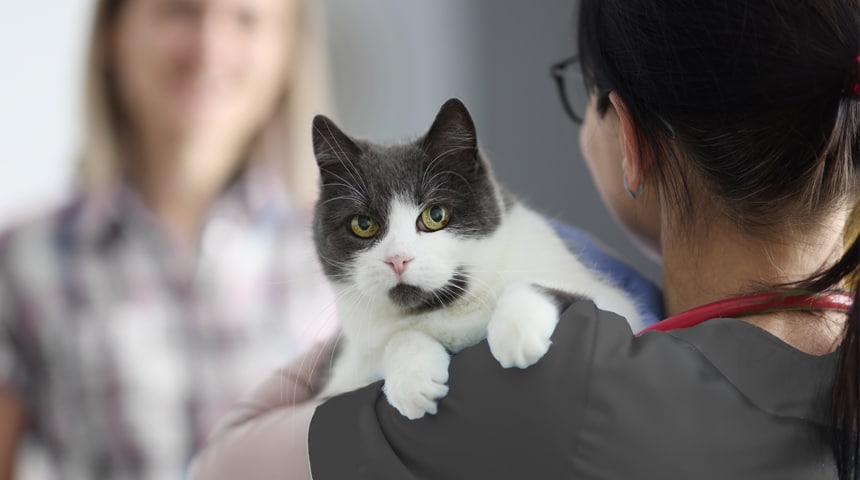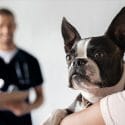The role of the veterinary technician, or VT, is to support and assist the veterinarian in their duties. They’re the right arm, the left arm and the eyes of the veterinarian. They are responsible for collecting physiological data, taking samples, and helping with the treatment of patients according to the plan issued by the veterinarian. VTs can practice in various fields of animal health such as small animal medicine, zoological medicine, laboratory and research centres, farm animal medicine, and even food inspection.
Although we are hearing more and more about the profession of VT, it is relatively young in Quebec. The requirement to obtain a college diploma in animal health technology to practice has only been mandatory since 2007. To obtain this diploma, students must successfully complete 3 years of study in one of the 8 CEGEPs that offer the program in Quebec:
- Collège Lionel-Groulx;
- Cégep de St-Hyacinthe;
- Cégep de Sherbrooke;
- Cégep de La Pocatière;
- Laflèche College (private);
- Cégep Beauce-Appalaches;
- Cégep de Saint-Félicien;
- Vanier College (English).
After obtaining their college diploma in animal health technology, new technicians can enter the job market directly.
What is Certification?
Have you ever noted the acronym “RVT” ("TSAc" in French) after the name of the technician you met? This "R" stands for registered. This registration is not mandatory in Quebec but is available to all veterinary technicians wishing to obtain it by passing a nationally recognized exam accessible throughout North America, called "VTNE" or "ENTSA" in French. In addition to providing satisfaction to the
technician obtaining their certification, it guarantees practice consistency, a standard of skills and the maintenance of these skills by following mandatory continuing education.
What Is Specialization?
After their registration, some RVTs wish to continue their development in a particular specialty. After meeting all eligibility criteria, they can then submit their application to begin the specialization process. A minimum number of hours worked in the desired field is required to apply. The latter varies from one association to another but can go up to 6,000 hours. This specialization must be done through an association recognized by NAVTA (National Association of Veterinary Technicians in America) and is only available in the United States. The specialization process is very rigorous; it varies according to the specialty and lasts several years.
Here are the recognized specialties in animal health technology:
- Emergency and critical care
- Veterinary dentistry
- Small animal internal medicine
- Large animal internal medicine
- Veterinary oncology
- Veterinary neurology
- Veterinary cardiology
- Anesthesia and analgesia
- Zoological medicine
- Clinical pathology
- Laboratory animals
- Behavioural medicine
- Clinical practice
- Dermatology
- Equine medicine
- Physical rehabilitation
- Ophthalmology
- Veterinary surgery
- Diagnostic imaging
- Nutrition
After acceptance of the pre-application, the technician must, over a period of one year, prepare and submit a complete application and it is only when this has been accepted that the technician can take the practical test. Once the exam is passed, the certified technician is officially considered a specialist! They can then add the letters "VTS" (Veterinary technician specialist) as well as their field of specialization in their signature. For example, a technician specializing in anesthesia and analgesia will add the following qualifications to their signature: VTS (Anesthesia & Analgesia).
In Quebec, as of September 2024, only 8 RVTs have obtained the "VTS" designation.





